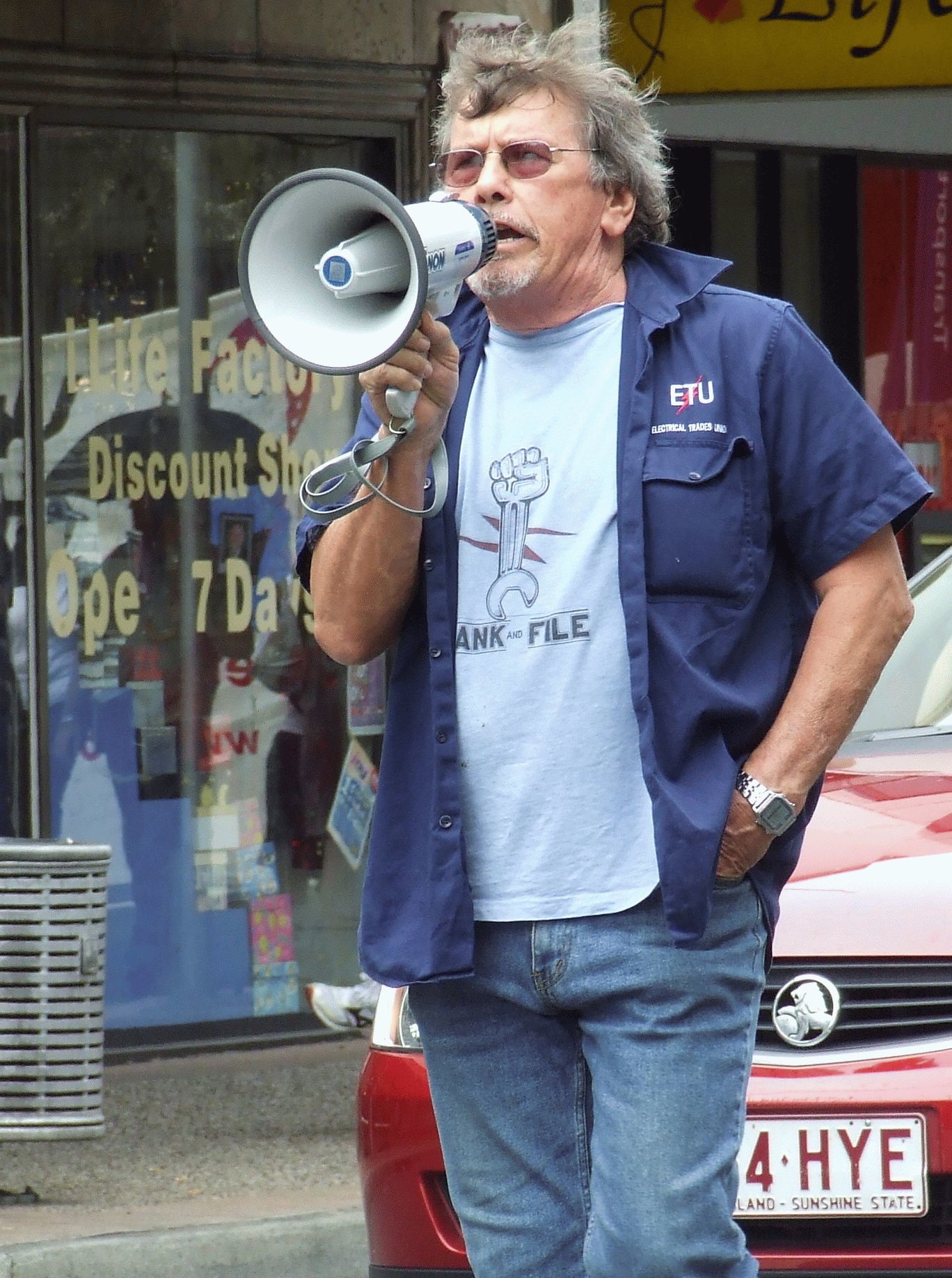
If anything reflected Bernie Neville’s view on the working class, it was his often-repeated phrase: “No surrender!”
Anyone who worked with Bernie, who recently died, will relate to that attitude. It was the core of his activism during 1985–86, the torrid South East Queensland Electricity Board (SEQEB) dispute.
Bernie, a linesperson, was committed to the rank and file of the Electrical Trades Union (ETU) who were fighting to stop the Joh Bjelke-Petersen government from sacking electricity workers and privatising the industry.
He was sacked, along with 940 others on strike, as the government was determined to impose casualisation and contracts in the power industry.
The conflict that ensued was massive in scale and consequence.
Bernie was a leader of the ETU Strike Committee, and therefore at the centre of the pressure that came down on the workers to accept defeat.
bernie_neville_david_jackmanson_2007.jpg

But he always held the line: he was absolutely committed to his workmates and getting their jobs back.
Bernie wrote about that period in the Neighborhood News in 2005: “The Bjelke-Petersen government also moved to have the ETU fined and deregistered.
“Bjelke-Petersen had police maintain a presence outside all SEQEB depots so that any union members who wanted to scab would not be threatened.
“The dispute could have been settled without the loss of any jobs had Bjelke-Petersen not vetoed a possible solution that would have been acceptable to the Queensland Industrial Commission, but Bjelke-Petersen said he wanted the striking workers, members of the ETU to ‘suffer enormously’.”
The ETU was deregistered and Bjelke-Petersen launched a spate of other anti-union measures to curtail solidarity and picketing. A state of emergency was imposed across Queensland, empowering the state to suppress all support for the striking workers.
Bernie wrote that “for showing solidarity with the sacked SEQEB workers, members of the [Municipal Officers Association] MOA were threatened with fines of $1000 every time they refused to follow a directive to increase the supply of electricity (the operators had reduced power in support of the sacked workers).
“When the power station operators refused to be intimidated, Bjelke-Petersen went even further and threatened legal action. The men could face fines of $50,000 each and their union $250,000.”
Tragically, an alliance between the Australian Council of Trade Unions (ACTU) and Bob Hawke’s Labor government sallied any chance of victory for the ETU by lifting sanctions when the Queensland government was at its weakest.
The SEQEB dispute ended in a historic defeat for the labour movement.
As Bernie noted in his request that Queensland Premier Peter Beattie not give Bjelke-Petersen a state funeral: “The Bjelke-Petersen government tore up the industrial relations rule book when it rammed savage anti-union legislation through parliament. The Electricity Bill (Continuity of Supply) forbade strikes and picketing of electricity workers and made provision for confiscation of their property, including their homes, if they went on strike.
“The bill barred union officials from entering workplaces and made provision for the rapid deregistration of unions and seizure of their funds — the laws used by the Bjelke-Petersen government were in violation of the International Labor Organisation charter.
“What the Queensland government did was replace the Queensland Industrial Commission with a one-man rule. The Queensland Electricity commissioner in 1985, acting at the behest of Bjelke-Petersen, had the power to decide what wages and conditions the workers could expect. Any worker that showed dissent at such decisions, however unjust, could be fined $1000 and dismissed.”
Bernie epitomised a commitment to class struggle that the Hawke government was keen to marginalise with its Price and Incomes Accord — a bit of consensus spin engineering between the federal government and the ACTU.
After SEQEB, Bernie continued to campaign against the conversion of Christmas Island into another Guantanamo Bay. He also worked tirelessly to save the AHIMSA peace house in West End from the chicanery of the Public Trustee.
He was also an early member of the Socialist Alliance.
[For background on the SEQEB dispute, watch Tom Zubrycki’s film Friends and Enemies.]